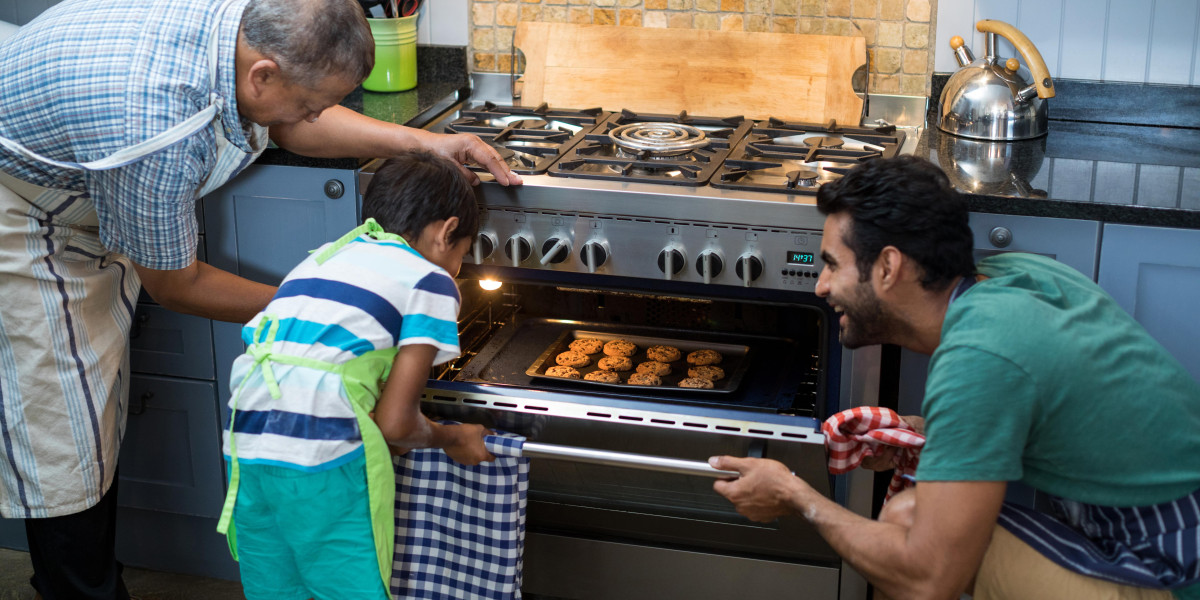The Comprehensive Guide to Built-In Ovens: Features, Benefits, and FAQs
Built-in ovens integrated are a popular choice for modern-day cooking areas, providing adaptability, efficiency, and a streamlined style that integrates flawlessly into cabinets. This article will delve into the numerous elements of built-in ovens, including their functions, benefits, setup options, maintenance suggestions, and responses to typically asked concerns.
What is a Built-In Oven?
A built-in oven is developed to be installed within kitchen cabinetry and is offered in different setups, such as single or double ovens. Unlike freestanding ovens, built-in models provide a streamlined appearance and provide more flexibility in kitchen style. They can be found in Haden 60cm Electric Built-In Oven with Fan Assist, gas, and steam options, dealing with a series of cooking preferences.
Functions of Built-In Ovens
Beko 99L Built-In Double Oven - Stainless Steel ovens are loaded with features that improve cooking experiences. Here are some of the most common features to think about:
| Feature | Description |
|---|---|
| Self-Cleaning | Many models include a self-cleaning function that burns off residue at heats, streamlining upkeep. |
| Convection Cooking | This function utilizes a fan to distribute hot air, cooking food more uniformly and rapidly. |
| Smart Technology | Some ovens come geared up with Wi-Fi connection, enabling users to manage the oven from another location via smart device. |
| Multiple Cooking Modes | Include choices such as baking, broiling, roasting, and air frying, supplying adaptability for various dishes. |
| Temperature level Probe | Keeps track of the internal temperature of food, making sure perfectly cooked meals each time. |
| Sleek Design Options | Available in different finishes (stainless steel, black, white) to match kitchen decor. |
Advantages of Built-In Ovens
The installation of a built-in oven brings various benefits to any kitchen:
- Space Efficiency: Built-in ovens optimize kitchen space, offering a clean and organized look without compromising functionality.
- Enhanced Cooking Performance: With advanced features like convection cooking and precise temperature level controls, built-in ovens typically outperform traditional models.
- Design Flexibility: These ovens can be set up at eye level, permitting easy gain access to without flexing down, which can be specifically useful for people with physical restrictions.
- Improved Resale Value: A properly designed kitchen with top quality built-in appliances may attract potential purchasers, enhancing total property worth.
- Personalization Options: Many brand names use personalized designs that fit the particular measurements and visual of specific cooking areas.
Installation Options
When selecting a built-in oven, comprehending the installation options is crucial. Here are the most typical setups:
Single Built-In Oven: Ideal for smaller kitchen areas, these units provide enough space to cook a range of meals concurrently, perfect for everyday cooking.
Double Built-In Oven: Best fit for passionate cooks and large households, double ovens allow for simultaneous cooking at 2 various temperature levels, suitable for meals that need different cooking methods.
Combination Steam and Oven: A hybrid service that combines the benefits of standard baking with steam cooking. This choice is exceptional for maintaining wetness in foods, making it best for baking bread or roasting meats.
Maintenance Tips for Built-In Ovens
Maintaining a built-in oven is essential for its longevity and optimal efficiency. Here are some useful upkeep tips:
Regular Cleaning: Use the self-cleaning function when needed, and clean down the exterior and interior surface areas regularly to avoid grease buildup.
Inspect the Seals: Inspect the oven door seals for any wear or damage to guarantee proper insulation and cooking efficiency.
Temperature level Calibration: Occasionally evaluate the temperature level accuracy using an oven thermometer, especially if cooking times seem longer than usual.
Ventilation: Ensure adequate ventilation around the oven to prevent getting too hot, especially for built-in models that might be surrounded by kitchen cabinetry.
FAQs About Built-In Ovens
1. Are built-in ovens more pricey than freestanding designs?Yes, built-in ovens tend to be more pricey due to their style, installation requirements, and www.Ovensandhobs.Uk extra functions. However, their benefits can validate the expense in the long run.
2. Can you set up a built-in oven yourself?While some useful individuals might attempt to install a built-in oven, it is recommended to hire an expert to ensure correct installation, ventilation, and safety requirements.
3. What is the typical lifespan of a built-in oven?The common lifespan of a built-in oven is around 10 to 15 years, depending on usage integrated hob and oven upkeep. Regular care can assist extend its longevity.
4. Are built-in ovens energy effective?Lots of contemporary built-in ovens are designed with energy effectiveness in mind, including functions like insulation and accurate temperature level controls that may decrease energy consumption compared to older designs.
5. Can a built-in oven be fixed if it breaks?Yes, built-in ovens can often be repaired. It is a good idea to get in touch with a certified professional for diagnoses and repair work to make sure security and compliance with warranty contracts.
Built-in ovens are an excellent addition to any modern-day kitchen, providing a mix of design, performance, and advanced cooking functions. With the ideal understanding about their functions, benefits, and upkeep, house owners can make informed choices to boost their culinary experiences. As kitchen style patterns continue to progress, the built-in oven stays a staple for those seeking to mix looks with efficiency in their cooking areas.






